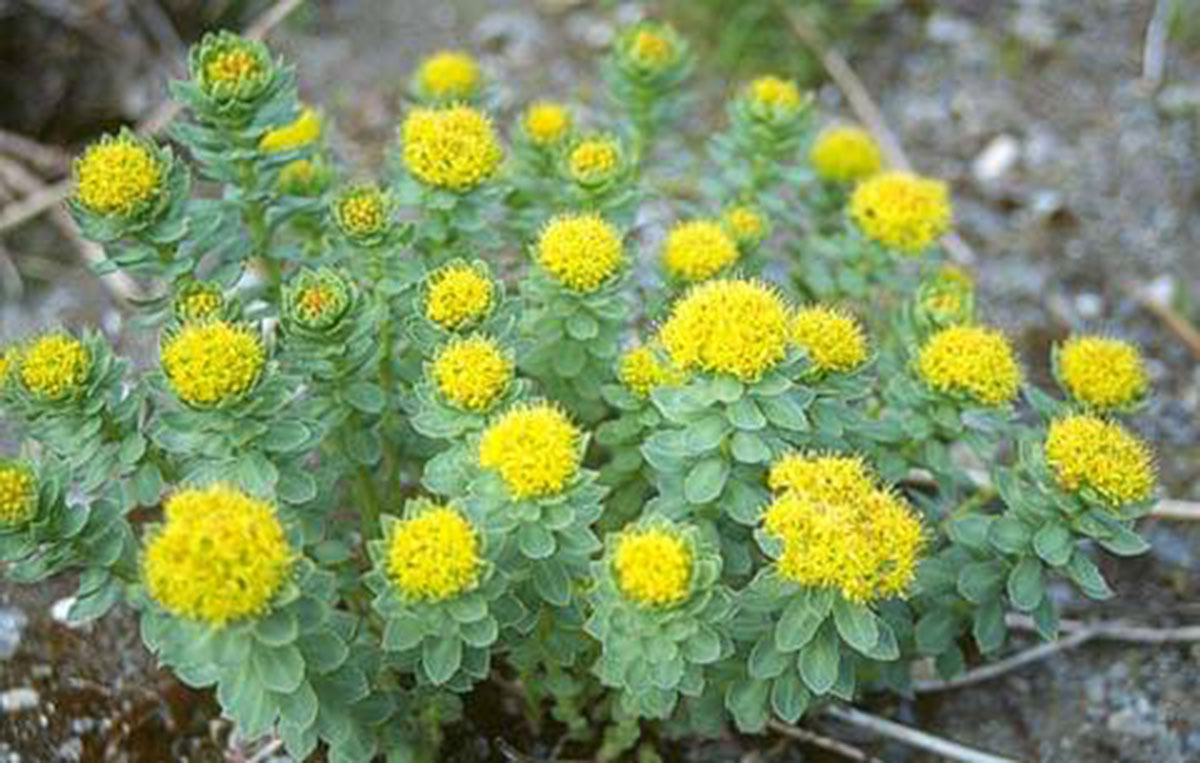
Rhodiola Rosea
by Michael Tierra, L.Ac, AHG
Rhodiola Rosea is a member of the family Crassulaceae, a family of plants native to the arctic regions of Eastern Siberia. It grows at altitudes of 11,000 to 18,000 feet above sea level. As an herb, it grows approximately 2 1/2 feet high and has yellow flowers, whose smell is similar to that of roses, thus imparting its name.
Rhodiola would be classified as an adaptogen meaning that it has a nonspecific ability to assist the body to withstand stress and maintain normalcy even when threatened with pathological conditions. As such it is similar to a number of other herbs classified as adaptogenic including: Siberian ginseng, Reishi mushroom, Ginseng, Codonopsis and Ashwagandha. In Siberia it is said that “those who drink rhodiola tea regularly will live more than 100 years.” Chinese emperors always looking for the secret to long life and immortality sent expeditions into Siberia to collect and bring back the plant. Being one of the most popular medicinal herbs of middle Asia, for many years Rhodiola was illegally trafficked across the Russian border to China.
In Siberia it was taken regularly especially during the cold and wet winters to prevent sickness. In Mongolia it was used for the treatment of tuberculosis and cancer. Formerly regarded as a scarce plant, researchers from Tomsk State University found significant stands of this valuable herb growing wild in Siberia at elevations of 5000 to 9000 feet above sea level. Subsequent research has substantiated high life giving biological activity with no toxicity.
For the treatment of depression extracts of rhodiola, namely rosavin and salidroside, in animal studies seem to enhance the transport of serotonin precursors, tryptophan, and 5-hydroxytryptophan into the brain. Serotonin is a widely studied brain neurotransmitter chemical that is involved in many functions including, smooth muscle contraction, temperature regulation, appetite, pain perception, behavior, blood pressure and respiration. When balanced, it imparts a a sense of contentment and mental ease. Either too much or too little serotonin on the other hand has been linked to various abnormal mental states such as clinical depression. Thus rhodiola has been used by Russian scientists alone or in combination with antidepressants to boost one’s mental state, a boon in countries and seasons where one is deprived of adequate sun over prolonged periods of months. This leads to a condition known as SAD or Seasonal Affective Disorder, common to Northern European countries.
Rhodiola has also been shown to be effective for cardiac problems caused or aggravated by stress. Its action for these conditions is in its ability to decrease the amount of catecholamines and corticosteroids released by the adrenal glands during stress. The abnormal presence of these stress hormones will subsequently raise blood pressure, cholesterol, potassium levels and increase risk factors for heart disease. Rhodiola has been found to decrease harmful blood lipids and thus decrease the risk of heart disease. It also decreases the amount of cyclic-AMP (c-AMP) released into cardiac cells. Cyclic AMP is related to ATP (adenosine triphosphate), the body’s primary energy molecule. C-AMP acts as a ‘second messenger’ or liaison between the outer and inner environments of the cell. It assists in the uptake of more intracellular calcium into the heart thus promoting a greater potential for heart muscle contraction. Rhodiola thus regulates the heart beat and counteracts heart arrhythmias.
As an adaptogen, rhodiola both stimulates and protects the immune system by reinstating homeostasis (metabolic balance) in the body. It also increases natural killer cells (NK) in the stomach and spleen. This action may be due to its ability to normalize hormones by modulating the release of glucocorticoid into the body.
Rhodiola has potent antioxidant properties. By limiting the adverse effects of free radical damage, it is able to combat all the diseases associated with aging. The presence of free radicals is associated with cell mutagenicity, the immediate cause of cancer. Again, Russian researchers have found that the oral administration of rhodiola inhibited tumor growth in rats 39 percent and decreased metastasis by 50 percent. It improved urinary tissue and immunity in patients suffering with bladder cancer. In other experiments with various types of cancer, including adenocarcinoma (cancer of glandular tissue such as breast cancer) and lung carcinoma, the use of extracts of rhodiola rosea resulted in significant increased survival rate.
Like Siberian ginseng, rhodiola is routinely used by athletes to improve performance. While the mechanism is not completely understood, rhodiola seems to improve the ratio of muscle-fat and increases hemoglovin and erythrocytes levels in the blood. Many other benefits from the use of Rhodiola has been found including its ability to improve hearing, to regulate blood sugar levels for diabetics and protect the liver from environmental toxin.
Nearly 200 different rhodiola species have been identified. Only 14 have been subjected to biochemical study and it has been found that the chemical composition and pharmacological activity of rhodiola is definitely species related. In general rhodiola contains phenylpropanoids, proanthocyanidins and flavonoids. The most uniquely active chemical constituents are the phenylpropanoids, rosavin (the most active), rosin, rosarin, rhodiolin, salidroside, and its aglycon, p-tyrosol. Only Rhodiola rosea contains rosavin, rosin and rosarin.
Essentially rhodiola rosea counteracts the effects of stress that ultimately underlies the evolution of most diseases. Currently rhodiola is a featured single herb Planetary Formulas product.
Reference: Arctic Root (Rhodiola Rosea): The Powerful New Ginseng Alternative by Carl Germano, R.D., C.N.S. L.D.N. and Zakir Ramazanov, Ph.D. published by Kensington Health Books

